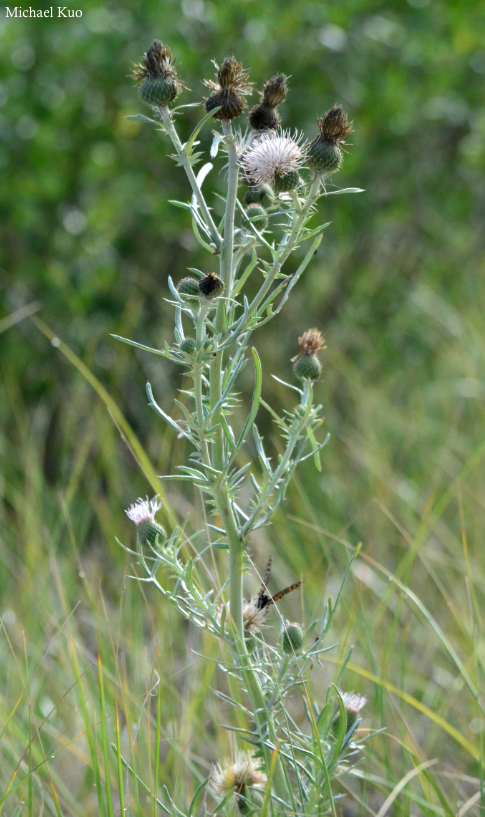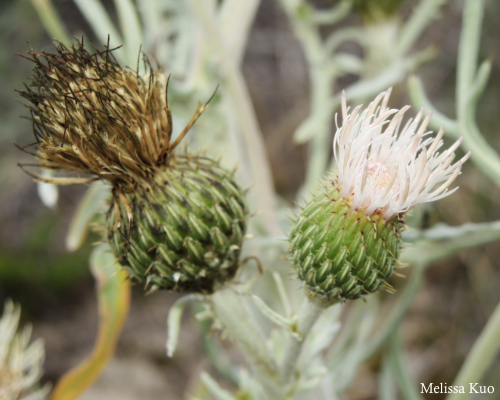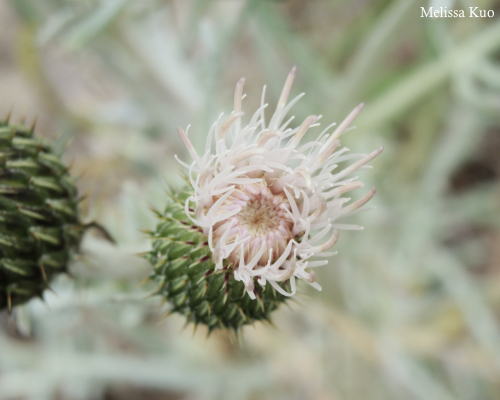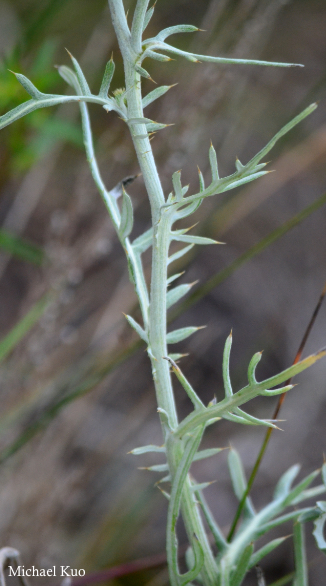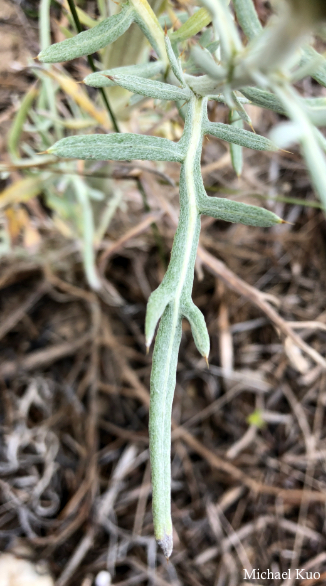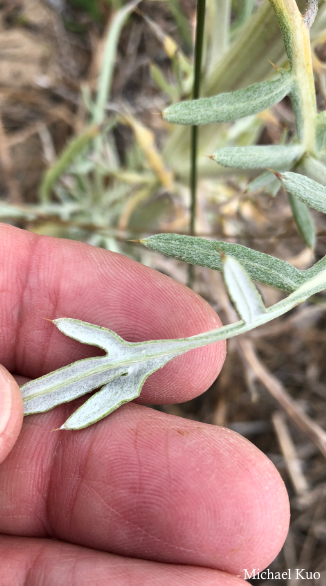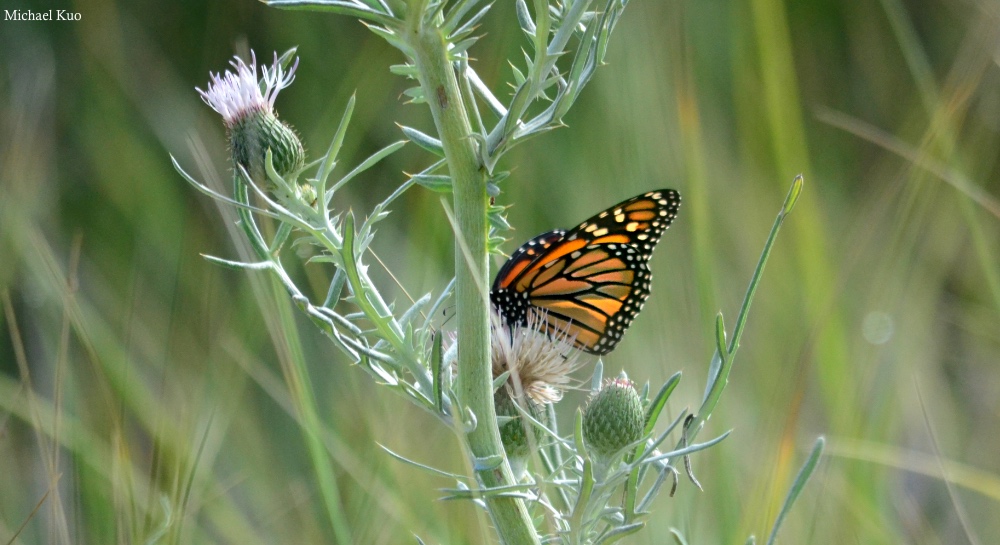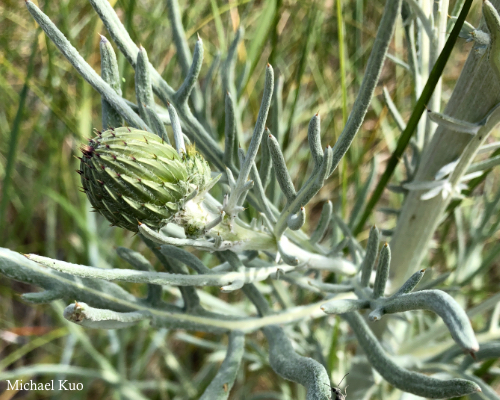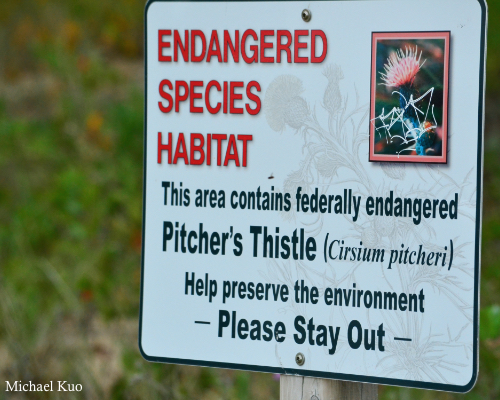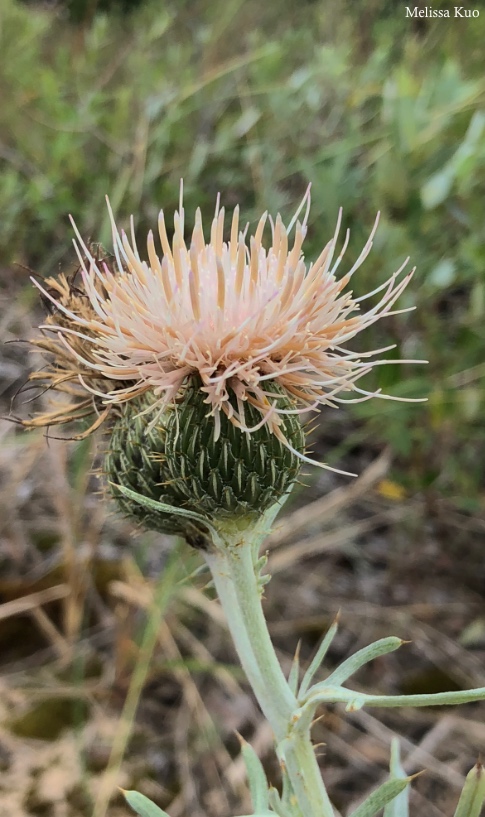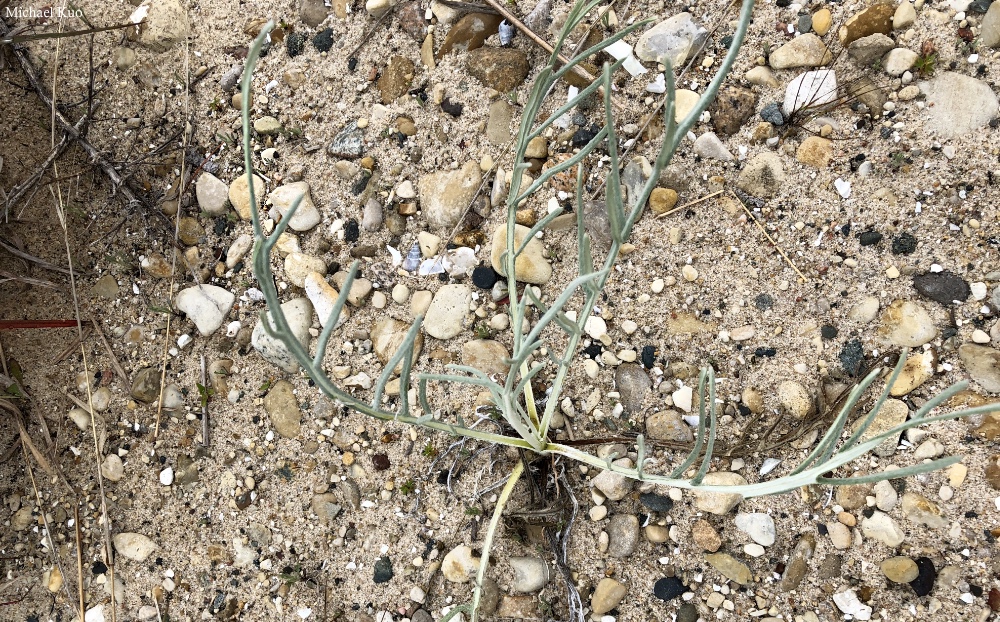 Cirsium pitcheri (dune thistle) |
 dune thistle is found on the sandy shores of Lake Michigan, Lake Huron, and Lake Superior |
|
Dune thistle is a gorgeous plant, endemic to the shores of Lake Michigan, the southern shores of Lake Huron, and a few locations on the southern shores of Lake Superior. Its colors are muted and subtle; the foliage has a whitish cast, and the flowers are whitish or pale pink, setting it apart from most other thistles in the Midwest. Unfortunately, dune thistle is a threatened species—meaning it is headed toward endangered species status—as a result of the most dangerous invasive species on our planet: Homo sapiens. Shoreline development, road work, hikers, beach-goers, dune buggies and other off-road vehicles, and (especially) the intentional introduction of a seed-eating weevil (Larinus planus) as a "biological control" against invasive thistles like Cirsium arvense (Canada thistle), are all factors threatening the dune thistle. As a result, the plant is listed as threatened by the federal government, as well as by the states in which it grows. |
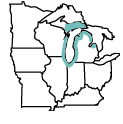 midwestern range |
|
|
|
|
|
|
|
|
|
|
|
|
|
|
|
References: GN Jones 1971, Havens et al. 2012, Voss & Reznicek 2012, Mohlenbrock 2014, Chicago Botanic Garden 2018, USDA 2018. Kuo, Michael & Melissa Kuo (July, 2018). Cirsium pitcheri (dune thistle). Retrieved from the midwestnaturalist.com website: www.midwestnaturalist.com/cirsium_pitcheri.html All text and images © , midwestnaturalist.com. |
